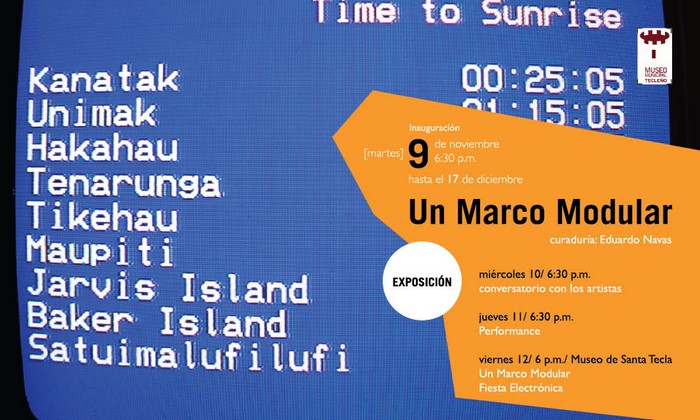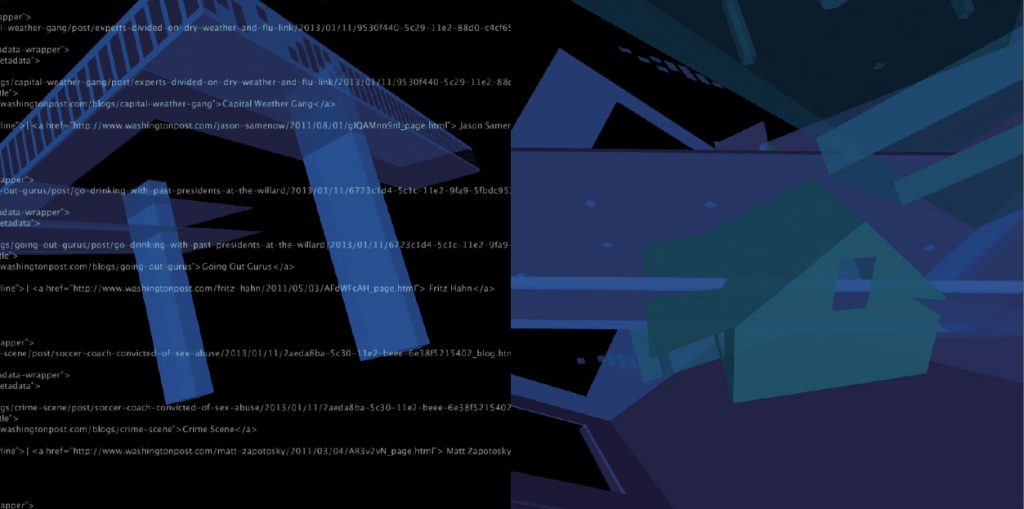A Modular Framework: Beyond Tautological History, by Eduardo Navas
A Modular Framework: Beyond Tautological History
Essay written for the exhibition A Modular Framework
CCESV, El Salvador
November 9 –December 17, 2010.
by Eduardo Navas
Note: This essay was written for the exhibition A Modular Framework, which took place at the Cultural Center of Spain in El Salvador, November 9 – December 17, 2010. The catalog was never published due to limitation of funds. I considered publishing this essay in art journals focused on Latin American Art, but the response by some was that it was either too specific and could not fit their specific theme at the moment, or that it read too much like an exhibition catalog essay which would not sit well outside of the context for which it was originally written. It has been nearly five years since I wrote the text, and I have decided to release it online, as part of my general research shared on Remix Theory. I am doing this because I believe that it is fair for the artists who participated in the exhibition to have access to the writing I produced. I also think that what I write in terms of critical theory and postcolonial studies may be of interest to people invested in Latin American Art.
Some of the issues raised in terms of the history of new media and Latin America may have changed since I wrote the essay in 2010. I leave it unchanged because I don’t see the point in updating the cultural context given that the exhibit was curated to reflect on the issues at play in 2010. Below is an excerpt. The full text can be downloaded in PDF format.
___________
A Modular Framework is an exhibition that brings together artists from Latin America, or artists who have ties to Latin America, and have been producing new media work since at least the mid-nineties, when new media and digital art began to take shape. Most of the works included in the exhibition are recent, and were chosen as examples of diverse and rigorous art practices. The artists, themselves, while they crossover into art practice at large, are pioneers in digital and new media art in their own countries and for this reason they were invited to participate in the exhibition.
A Modular Framework is the first of its kind in the Central American Region, and as such its purpose is to better acquaint the local culture with new media and digital art practice. At the same time, the exhibit is designed as a marking point, as a fragmentary modular assessment of the rich production of new media art by a specific set of artists who share similarities in their approach to the medium of digital art as a proper practice. The works included comment in one way or another on interconnectivity and possibilities of communication by exploring diverse interests in politics and aesthetics. This diverse activity is the result of a long process of art production that is intertwined with global culture. For this reason, before examining each of the selections, it is necessary to briefly outline the relation of new media and digital art practice in contemporary art history.
The Context of New Media and Digital Art
The type of work produced in new media and digital art is often linked by art and media historians to an interdisciplinary practice defined by the interest to move outside of the gallery as previously explored during the seventies with site-specific art, and especially conceptual and performance art. Of these three, conceptualism has been more often presented as a predecessor of new media and digital art practice. During the nineties, the Internet was viewed by emerging artists, who had online access, as a space in which to present work outside of not only the gallery but also their immediate locality. Such developments have influenced how new media works are currently presented as objects of art in a physical space. The works included in A Modular Framework reflect on this process, from different starting points.










